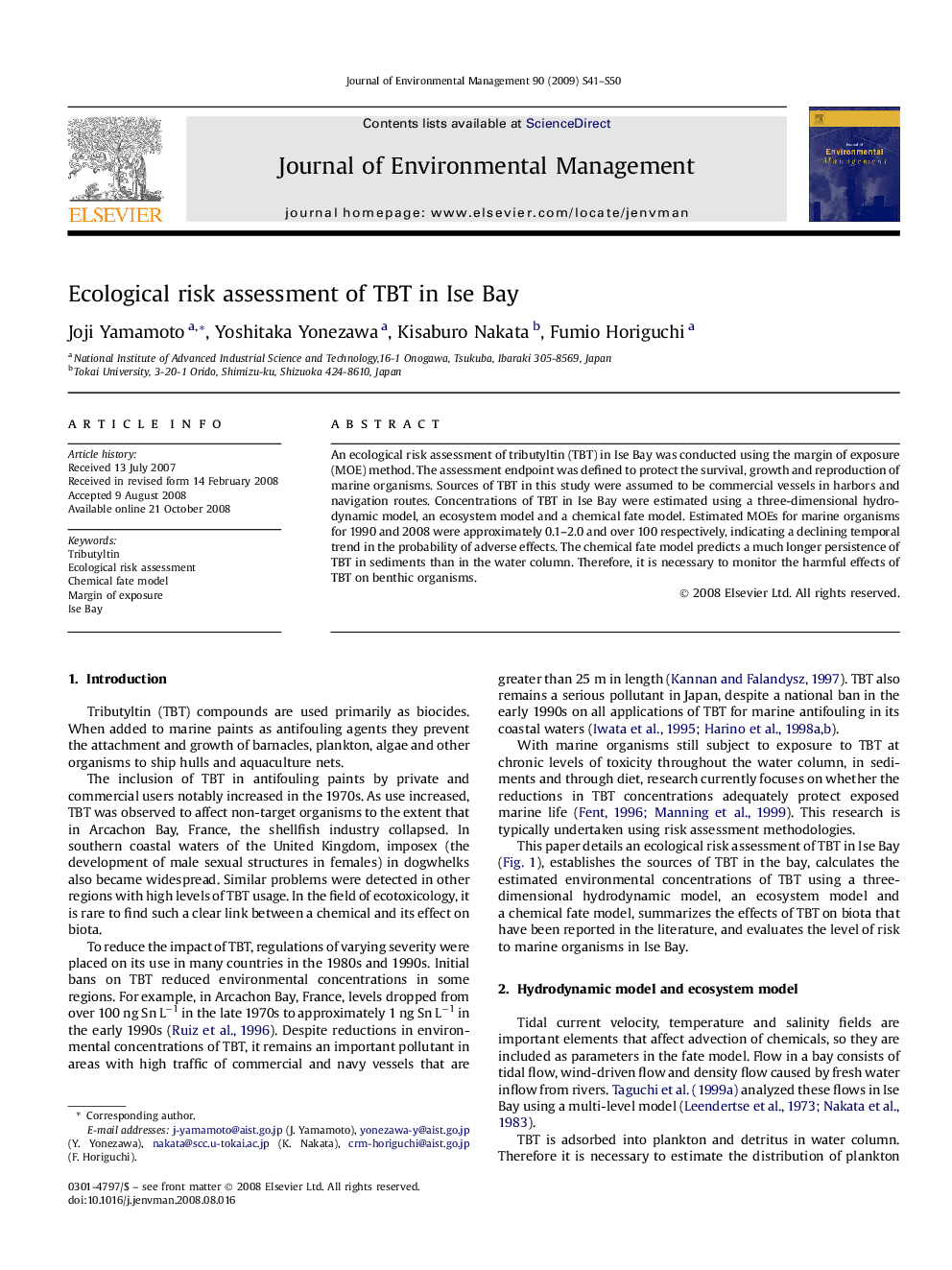| Article ID | Journal | Published Year | Pages | File Type |
|---|---|---|---|---|
| 1058539 | Journal of Environmental Management | 2009 | 10 Pages |
An ecological risk assessment of tributyltin (TBT) in Ise Bay was conducted using the margin of exposure (MOE) method. The assessment endpoint was defined to protect the survival, growth and reproduction of marine organisms. Sources of TBT in this study were assumed to be commercial vessels in harbors and navigation routes. Concentrations of TBT in Ise Bay were estimated using a three-dimensional hydrodynamic model, an ecosystem model and a chemical fate model. Estimated MOEs for marine organisms for 1990 and 2008 were approximately 0.1–2.0 and over 100 respectively, indicating a declining temporal trend in the probability of adverse effects. The chemical fate model predicts a much longer persistence of TBT in sediments than in the water column. Therefore, it is necessary to monitor the harmful effects of TBT on benthic organisms.
